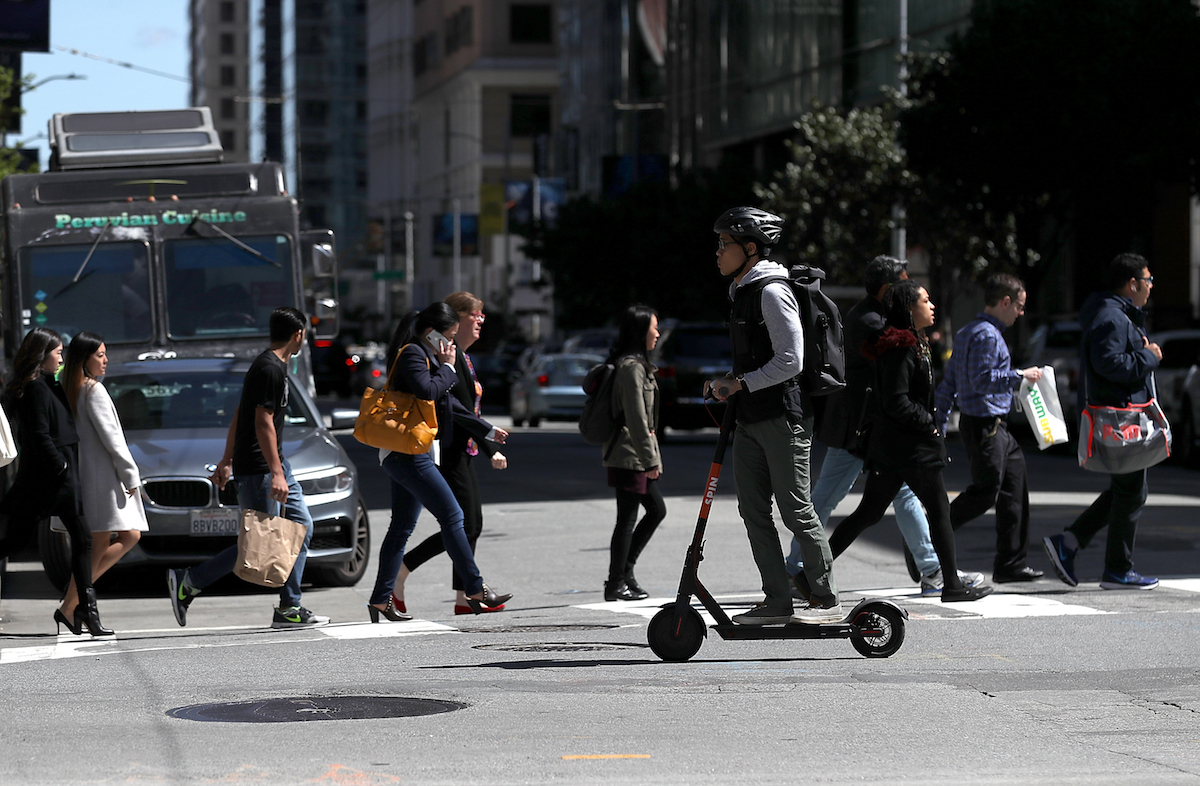- Silicon Valley residents live a completely different lifestyle than people in many parts of the US do.
- In Silicon Valley, it’s not unheard of to commute 10 hours to work, order a car that hasn’t even been designed yet, or pay $1 million for a condo in a sinking skyscraper.
- Here are 10 crazy things Silicon Valley thinks are normal – but aren’t.
Those living in or near Silicon Valley may sometimes feel as if they live on a different planet than most other parts of the US.
In Silicon Valley, it’s not atypical for people to work 80-hour weeks, accept payment via bitcoin, or travel everywhere by electric scooter. According to the San Francisco Business Times, commuters may live a 10-hour drive from their workplace or live in their employer’s parking lots in an effort to avoid the surging real-estate prices of the Bay Area.
As it has become a global hub for some of the world’s largest tech companies, Silicon Valley has transformed drastically, often shocking the residents who were there before the tech boom.
Here are 10 things that Silicon Valley residents do that may seem weird to everyone else:
1. Paying $1 million for a condo that's sinking

Prices for condos have gone down over the past few years in theMillennium Towerin San Francisco's SoMa neighborhood, as Business Insider previously reported. That's because the 58-story building started to sink shortly after it was built and will continue to do so.
If you don't mind velcroing your furniture to the floor, you can buy a two-bedroomcondofor a mere $1.2 million - slightly below the median sale price for San Francisco of $1.35 million, reported byTrulia, and wellbelowthe initial list prices for many of the units.
That old joke about swampland for sale is dead serious in the Bay Area's beyond-tight housing market.
2. Living in an RV in your employer's parking lot

The average salary for a software engineer in the San Francisco area is about $124,000, according toGlassdoor. People making that much would still have to spend about half their after-tax income to rent a one-bedroom apartment in San Francisco, where the median rent is almost $3,700, according to Zillow.
Some tech workers have found a cheap solution: Forget getting an apartment entirely and simply move in to a convertedvanin the parking lot at work.
There have beenmany accountsover the past few years about tech employees setting up shop in vans outside their places of work, as Business Insider previously reported. A whole community ofRV-dwellerslived outside Google's headquarters, leveraging the company'samenitiesto make life in the parking lot work.
3. Living in a shipping container

For Silicon Valley workers who don't want to call their car home, there's another low-cost option: Move in to ashipping container.
Officesandhomesmade from shipping containers have begun to pop up in Oakland (which has lots of empty containers, thanks to the Port of Oakland). An offshoot of the tiny-home movement, a shipping container provides four walls, a roof and a floor, ready to be built out - if you can find a spot of land to put it on.
4. Commuting for an hour and a half or more to work

To escape high real-estate prices, some Silicon Valley workers spendan hour and a half or more getting to work. Stockton and Modesto, California, on the outer edge of the Bay Area, are home to almost 20% of the Americans who commute more than 90 minutes to work a day, according to research byApartment List.
But some tech workers have taken the move a step further - to Bend, Oregon. This small, relatively affordable city, a 10-hour drive or 70-minute flight from Silicon Valley, has become abedroom communityfor some who still work for Silicon Valley companies.
5. Paying $10,000 to mix with the cool kids at the TED conference

If you think ofTED talksas simply interesting videos that are short enough to digest during your lunch break, then you're missing out.
For a cool $10,000 (if TED accepts your application), you can become a memberandattendthe annual TED Conference. The acronym stands for Technology, Entertainment, and Design, and the conference attracts the tech set.
6. Paying big bucks for luxury accommodations at Burning Man

You may knowBurning Manas the giant counterculture village that springs up in the Nevada desert every summer.
The festival's10 principlesinclude gifting and decommodification, meaning that nothing is sold (exceptice and coffee). Burners participate in a gift economyfor a week, often bringing "playa gifts" to share with anyone who passes by.
That is, unless you're a Silicon Valley mogul - in which case you can drop in byhelicopterand camp inexclusiveluxury.Elon Muskonce said Burning Man is Silicon Valley.
7. Ordering a car that hasn't even been designed and waiting years for delivery

Speaking of Elon Musk, theTesla Model 3is a great example of the crossroads between innovation and insanity.
With a sticker price of $35,000, theModel 3is the more affordable cousin to Tesla's all-electricRoadstersports car, which goes for $200,000 plus a $50,000 reservation fee. More than 200,000 people put downdepositson the Model 3 back in 2016, on the promise of Musk's design and manufacturing mojo.
More than two years later, buyers are stillwaiting, ever hopeful.
8. Losing sleep over the coming invasion of killer robots

Last year, Musk issued impassionedwarningsthat artificial intelligence is a "fundamental risk" to human civilization. He even started amovementto ban killer robots.
It's all a big joke until the giant robot Baymax in "Big Hero 6" goes rogue.
9. Refusing to drink just plain water

Some Silicon Valley dwellers drink "raw water," or untreated spring water that is fresh from the earth and loaded withbacteriathat can make people sick. Refreshing!
Others drink meal replacements from startups likeHuelandSoylentthat some claim are "more efficient" than eating a regular meal.
10. Going everywhere by electric scooter

If you walk around Bay Area streets, you'll often see tech bros whizzing by onelectric scooters. Venture-funded rental scooter companies such as Bird, Lime, and Spin haveearned the ireof locals in the Bay Area and elsewhere, where abandoned scooters clog sidewalks.

